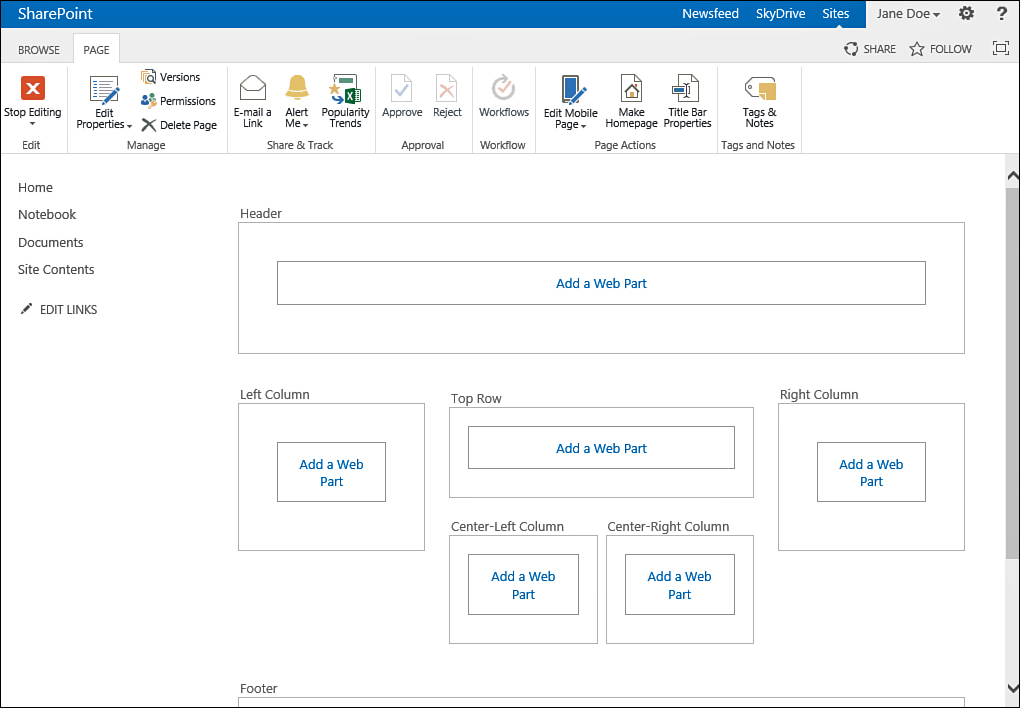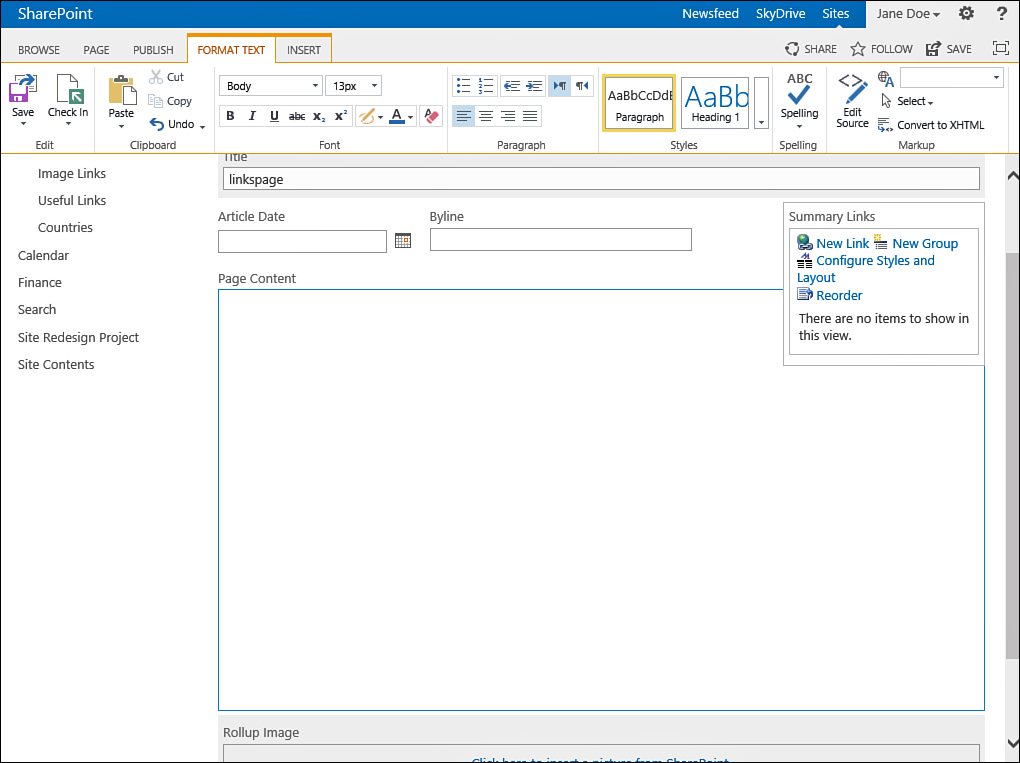The Differences Between Different Types of Pages
As explained before, the Add a Page option in
the site settings menu creates different types of pages depending on
the configuration of the site. Typically, a team site creates a blank
wiki page allowing you to freely type text and add web parts to the
body of the page as required (see Figure 3).
However, if you go to the team site’s Site Pages library and click on
the New Document button in the Files ribbon, you will see two different
types of pages you can create: a Wiki Page and a Web Part Page.

FIGURE 3 A new wiki page allows you to freely type text in the page, as well as add other components.
The Web Part Page option creates a web part
page. This kind of page does not allow you to type text anywhere in the
page but instead requires you to add web parts to the page in zones
that are defined by the page’s layout (see Figure 4). This helps enforce a certain layout for pages in the site.

FIGURE 4 A new web part page allows you to add web parts in prespecified zones.
Note
Some web parts allow you to write text in
them. Other web parts show different information or functionality.
The Publishing page option is available only
in certain sites with certain features. These pages are designed to
enforce certain layouts on the pages in the site and therefore are
preferred for sites that need strict structure and consistency between
the pages. These pages are usually slightly more complex versions of
wiki pages or web part pages or a mix of the two (for example, a wiki
page with web part zones in certain places). An example for one of
these layouts is the (Article Page) Summary Links layout. A page based
on this layout looks similar to a wiki page but with additional
controls:
- A link list on the right of the page
- A control to easily change the page’s title
- A control to easily change the article date
- A control to easily define a byline
- A control to set a roll-up image (an image that will be displayed by
roll-up web parts that list what pages are there on the site)
Figure 5 shows an example of such a page using that layout.

FIGURE 5 A publishing page using the (Article Page) Summary Links layout.